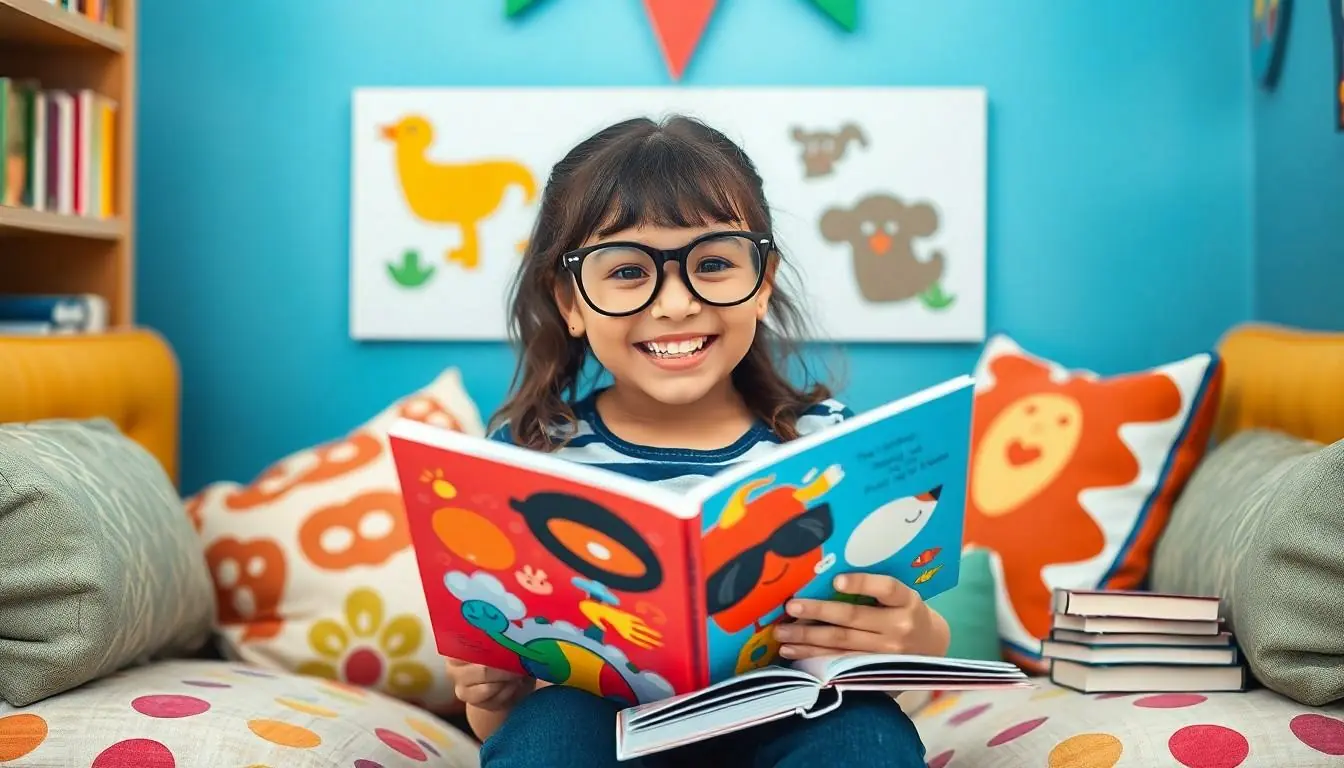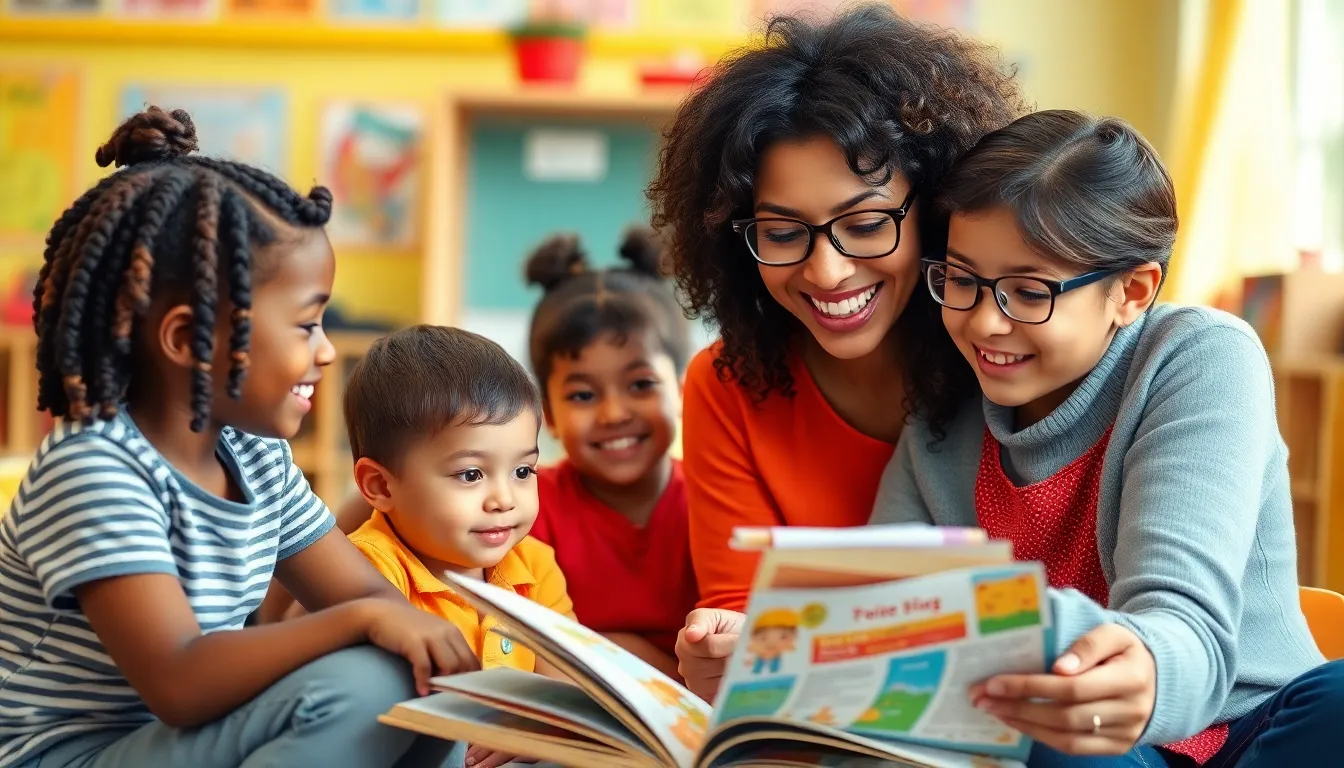When it comes to kids and reading glasses, most parents might picture oversized frames that make their little ones look like mini scientists. But let’s face it—those adorable specs can be a game changer for your child’s vision and confidence. Kids today are glued to screens and books more than ever, and just like superheroes need their capes, they might need a little optical assistance to see the world clearly.
Table of Contents
ToggleUnderstanding Reading Glasses for Kids
Reading glasses play a crucial role in enhancing children’s vision and academic performance. Eye care contributes significantly to their overall development.
Importance of Eye Care in Children
Eye care for children is essential for healthy vision. Regular eye examinations help identify problems early. Detecting issues promptly allows for timely intervention, which can improve overall learning experiences. Maintaining proper eye health supports not only academic success but also recreational activities. Parents should prioritize eye check-ups, especially for children engaged in screen time and reading.
Common Vision Problems in Kids
Kids commonly experience a range of vision problems. Nearsightedness, or myopia, affects their ability to see distant objects clearly. Farsightedness, or hyperopia, makes close tasks like reading difficult. Astigmatism causes blurred vision due to uneven curvature of the eye. Strabismus, characterized by misaligned eyes, can impact depth perception. Understanding these conditions helps in taking appropriate action, ensuring children receive the necessary treatment and support.
Types of Reading Glasses for Kids
Different types of reading glasses are available for kids, catering to various vision needs and preferences. Understanding these options helps parents make informed choices for their children’s eye care.
Prescription Glasses
Prescription glasses are tailored to a child’s specific vision requirements. An eye care professional determines the appropriate prescription after a comprehensive eye examination. These glasses correct common issues such as nearsightedness, farsightedness, and astigmatism. Choosing the right lens type ensures optimal clarity while reading. Frames come in various styles, allowing kids to express their personality. Many prescription glasses even feature lightweight materials for comfort during prolonged wear.
Non-Prescription Glasses
Non-prescription glasses serve as an alternative for children without specific vision problems. These glasses come in blue light filtering varieties designed to reduce eye strain from screens. Kids can use them while reading or watching television, enhancing their visual comfort. Available in numerous stylish designs, these glasses appeal to children’s preferences and allow for easy matching with outfits. Regular use may help develop a positive reading habit, boosting confidence and focus.
Features to Consider in Reading Glasses for Kids
Selecting the right reading glasses for children involves various factors. Key features help ensure comfort and effectiveness.
Lens Material and Coating
Opt for durable lens materials, as kids often drop or mishandle their glasses. Polycarbonate lenses provide high impact resistance, making them ideal for active children. Additionally, consider anti-reflective coatings that reduce glare from screens and bright lights, enhancing clarity. Scratch-resistant coatings prolong the lifespan of the lenses, maintaining visual quality over time. Various options exist, so comparing the benefits of different lens materials ensures a better match for a child’s lifestyle.
Frame Size and Fit
Frame size significantly impacts a child’s comfort and vision. A well-fitted frame prevents slippage and minimizes distractions while reading. Look for frames that sit securely without pinching the nose or behind the ears. Adjustable options can provide a customized fit as the child grows. Selecting lightweight frames reduces the chances of discomfort, encouraging consistent use. Parents should prioritize proper measurements, ensuring that frames suit their child’s unique face shape and size.
Popular Brands of Reading Glasses for Kids
Several brands specialize in crafting reading glasses tailored for children’s needs, providing both functionality and style. Each brand brings unique features to enhance the eyewear experience.
Brand A Overview
Brand A focuses on creating colorful and stylish frames designed specifically for children. Known for their durable materials, they ensure the glasses withstand the rigors of daily use. Most frames come with adjustable temples, allowing parents to customize the fit as kids grow. The brand offers a wide array of lens options, including anti-reflective and blue light blocking choices, which help reduce eye strain from screens. Parents appreciate the brand’s commitment to eye health, often recommending them for young readers.
Brand B Overview
Brand B emphasizes comfort and protection in their reading glasses, making them ideal for active kids. They utilize polycarbonate lenses that resist scratches and impacts, ensuring longevity. Many frames feature a lightweight design, which kids find easier to wear throughout the day. The brand also incorporates fun patterns and colors, encouraging children to wear their glasses willingly. Poised as a go-to option, Brand B consistently garners positive reviews for its combination of safety and style, appealing to both children and parents alike.
Conclusion
Reading glasses for kids play a vital role in enhancing vision and building confidence. By addressing common vision issues and providing tailored options, these glasses support children’s academic performance and overall development. With various styles and features available, parents can find the perfect pair that combines durability with comfort.
Regular eye examinations and timely intervention are essential to ensure children receive the optical support they need. As kids engage more with screens and reading materials, investing in quality reading glasses becomes increasingly important. Prioritizing eye care not only improves visual comfort but also fosters positive reading habits, setting the stage for a brighter future.







